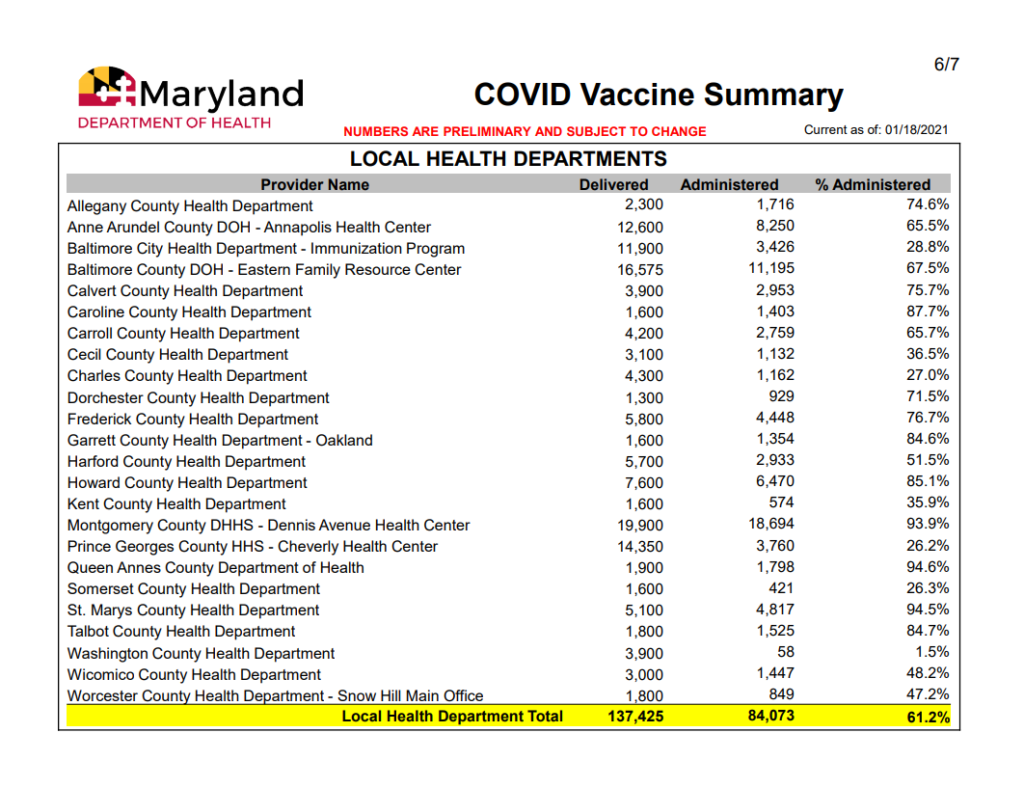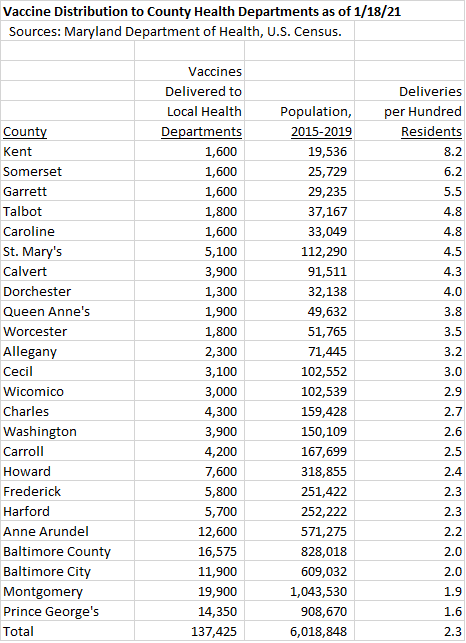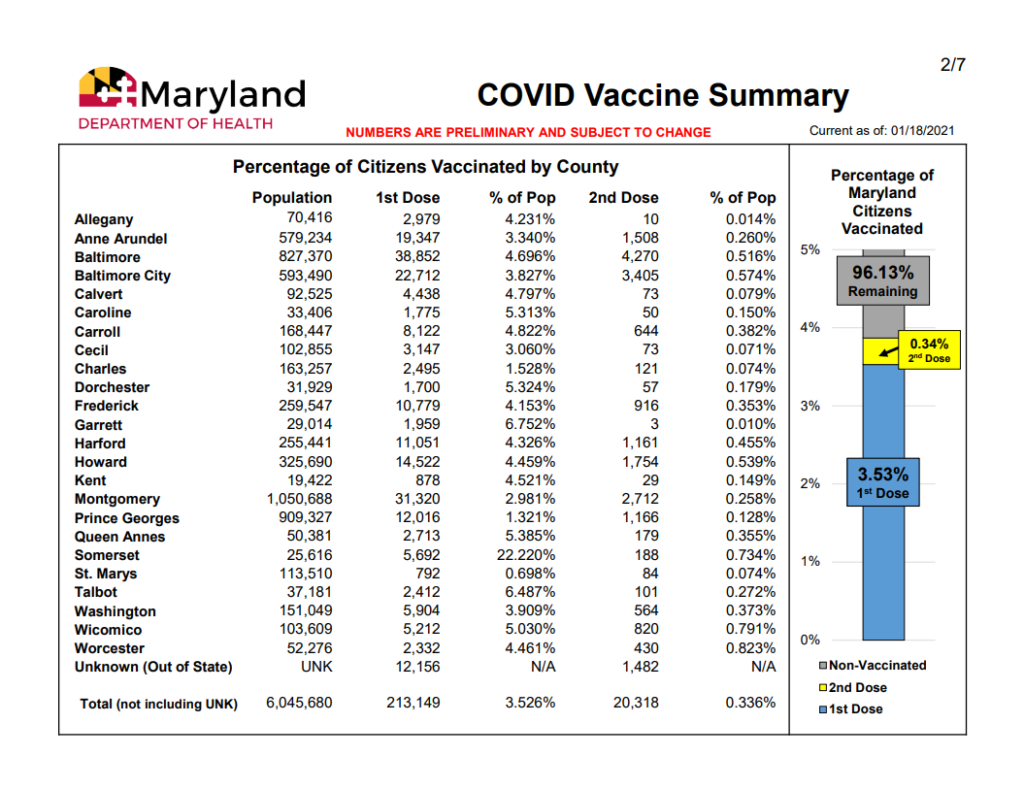By Adam Pagnucco.
COVID vaccine distribution is a hot issue in Maryland. COVID case rates have spiked since October and death rates are at their highest levels since the spring. Elected officials’ inboxes are filling up with inquiries from residents and the press is paying attention. Lots of folks are looking to their local governments but the vaccines are delivered by the state. How is the state doing?
Vaccine distribution in the U.S. is a multi-tier process. Pfizer and Moderna manufacture the vaccines. The federal government determines their allocations to states. (You can see open data on distribution of both the Pfizer and Moderna vaccines by state.) State governments then distribute the vaccines they receive to their local jurisdictions.
Maryland has established a three-phase hierarchy for determining the order in which groups receive vaccines. The state has progressed through Phase 1A (health care workers, residents and staff of nursing homes and first responders, public safety, and corrections staff) and is now in Phase 1B (assisted living, independent living, behavioral health and developmentally disabled group homes, and other congregate facilities; adults age 75 and older; and education and continuity of government). Further phases will expand to larger populations.
The state is currently distributing vaccines primarily to three different kinds of entities. Hospitals, who are expected to vaccinate their own staff members and associates, received 320,200 vaccines as of 1/18/21. Pharmacies, including CVS and Walgreens, are responsible for vaccinating nursing homes and received 73,125 vaccines as of 1/18/21. Local health departments are responsible for vaccinating other people in Phases 1A and 1B, especially health workers and first responders, and received 137,425 vaccines as of 1/18/21. Other agencies, including the National Institutes of Health, the D.C. Department of Health and a few state agencies, received another 20,950 vaccines.
And so the counties, hospitals and pharmacies don’t control how many vaccines they get. They do control the rates at which they administer vaccines to residents. As of 1/18/21, vaccine administration percentages were 61% for local health departments, 40% for hospitals, 39% for pharmacies and 69% for other agencies.
The table below shows administration rates by county health department. Queen Anne’s, St. Mary’s and Montgomery counties have all administered more than 90% of the vaccines they received from the state as of 1/18/21, the best in Maryland. Baltimore City and Charles, Prince George’s, Somerset and Washington counties have administered less than 30% of the vaccines they received as of 1/18/21.

Administration rate is one factor in vaccinating a population. The other factor is deliveries relative to population. It’s hard to know the location of residents being vaccinated by hospitals and pharmacies. However, local health departments are presumably vaccinating residents who live (or at least work) mostly within their jurisdictional boundaries. The table below compares vaccination deliveries to local health departments with U.S. Census estimates of their populations in 2015-2019.

There are large discrepancies in the state’s delivery of vaccines to local health departments on a per capita basis. Relative to their populations, Kent, Somerset, Garrett, Talbot and Caroline counties – each having less than 40,000 residents – received the most vaccines, varying from 4.5 to 8.2 per hundred residents. Montgomery County (1.9 vaccines per hundred residents) and Prince George’s County (1.6 vaccines per hundred residents) are at the bottom. Baltimore County and Baltimore City are also below the state average delivery rate per capita.
A county with an excellent vaccine administration percentage but a low delivery rate from the state could wind up with a low vaccination percentage of its population. In fact, that’s what the table below shows for Montgomery County. Despite having one of the best administration percentages in the state, MoCo is below average on the percentage of its population receiving a first and second shot because of its low per capita delivery rate.

It’s still an early moment in the state’s vaccination program. There is time to improve. But there is also a role for elected officials who represent counties with low vaccine delivery rates and their constituents to press the state to do better.
